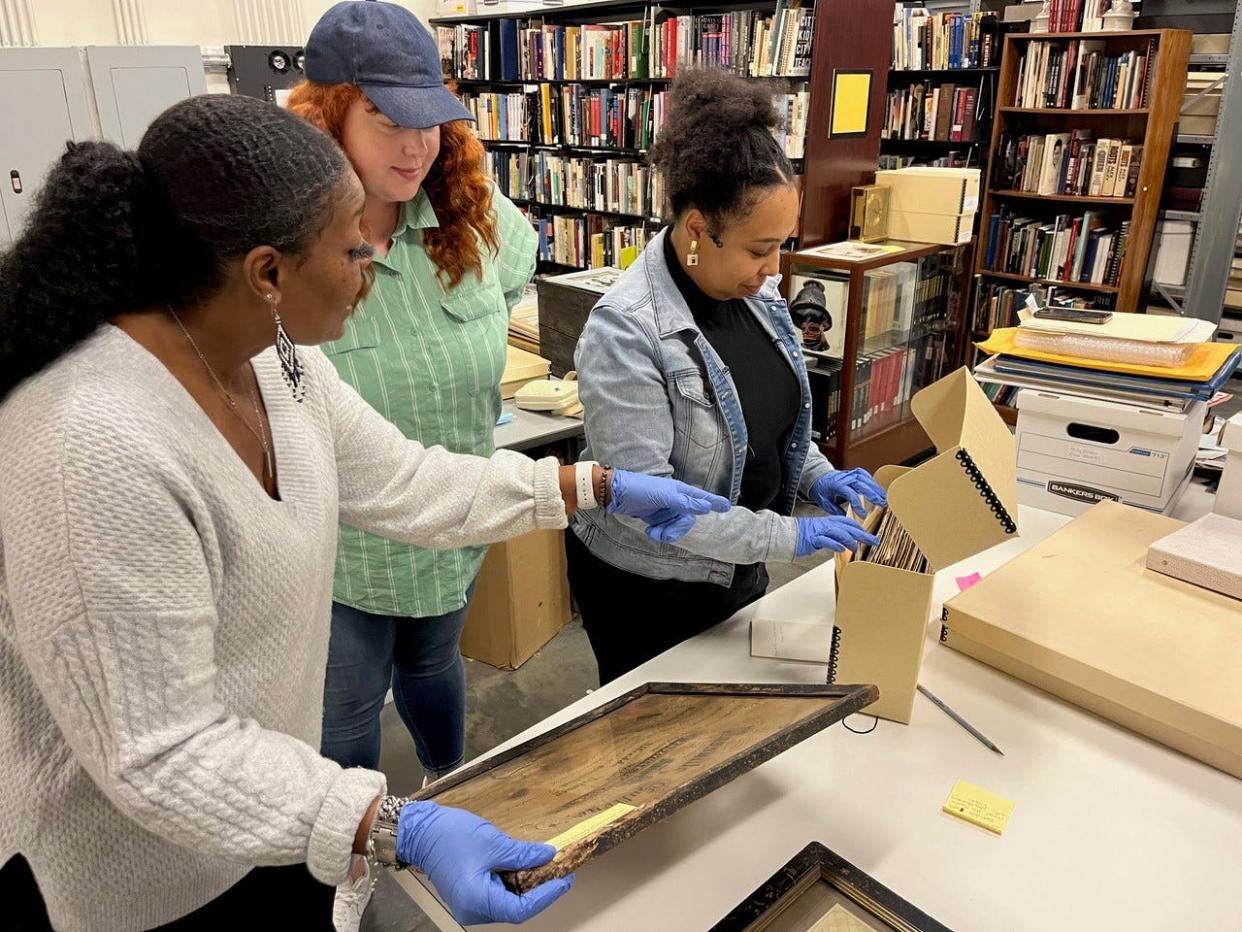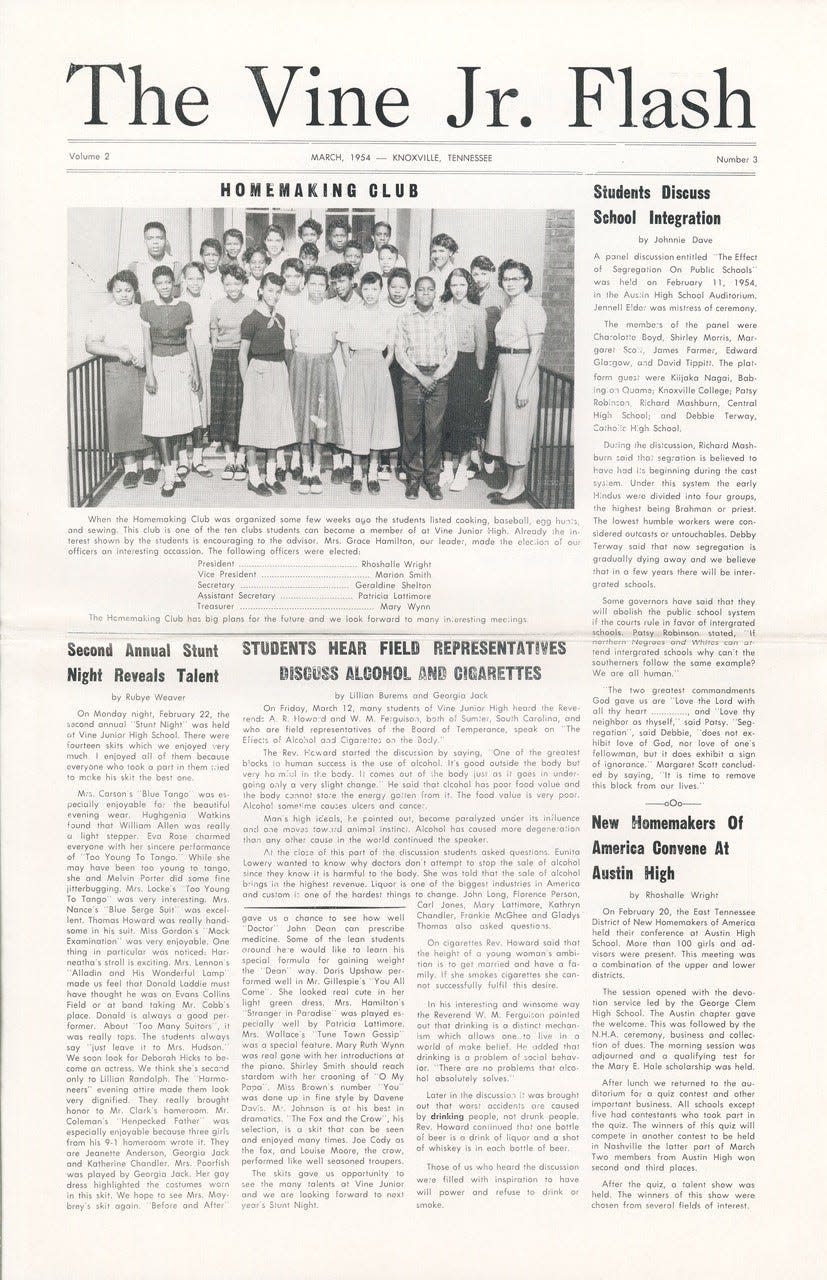Cherished Institutions: Beck center digitizes artifacts from Knoxville's Black schools
There are some rooms that impart on a person a weight of importance, that make you draw your hands in to ensure you don’t bump into anything. One such space is the archive room of the Beck Cultural Exchange Center in East Knoxville.
This neatly organized space houses an extensive education collection that comprises more than a century’s worth of material on Black schools and pioneering alumni. Much has been obtained through donations from generations of community residents.
Because of this unique collection, Beck was one of 15 institutions chosen in 2022 for a $278,210 grant from the Council on Library and Information Resources (CLIR), to tell the story of Black education in Knoxville. The grant application process took nearly a year.
In the time since receiving the grant, the employees and volunteers have been hard at work digitizing and archiving each piece.
Rev. Renee Kesler, president of the Beck Center, explained that “much of what we have is so fragile. We can’t keep touching it. We can’t keep handling it. This grant allows us to digitize the collection for people to have access to it all over the world for academic research.”
The grant opened the door for Beck to hire staff to rehouse, digitize, and make available virtually 60 linear feet of archival material related to the Black experience with segregated education, including yearbooks, student publications, and photographs.
Many of the items in the collection are the only remaining copies in existence.
Knoxville College, Austin High, Knoxville Colored High, Vine Junior High, and Eastport Elementary represent some of the historic Black schools in which few records exist outside of the Beck archives.
One such example is a collection of Vine Middle School’s student newspaper named “The Vine Jr. Flash.” Briana Flanagan, the archivist at Beck, explained that “the students did everything, the writing and editing.”
The students also covered topics such as school integration. “They are not just writing about what happened within their school,” Kesler pointed out, “but about what is going on in their larger community.”
Because of the material’s age and rarity, digitization is crucial to preserve it. Beck takes great pains to ensure that each item is well preserved. Kesler ensured that “if you entrust your artifacts to us, we give you our word that we will be good stewards over those resources.”
Beck’s “Cherished Institutions Project” aims to rehouse, digitize and open access to the Beck’s collection of yearbooks, school newspapers, photographs, and other materials from the period of Emancipation through the Civil Rights era. By doing so, it amplifies Black voices by preserving and making accessible their stories.

It reclaims a term from Goss vs. Knoxville Board of Education, in which the board sought to delay desegregation in order to protect its “cherished institutions.” The case, as recorded by Josh Flory with Knox County Schools, went as follows:
Five years after the Supreme Court struck down segregation in the landmark Brown vs. Board of Education decision, more than a dozen Knoxville students went to all-white schools and asked to enroll. The lead plaintiff was Josephine Goss, an 11th grader at Austin High School and daughter of barbershop owner Ralph Goss. Theotis Robinson Jr. was also one of the students who in September 1959 tried to enroll at East High School but was turned away by the acting principal.
The Goss case eventually made its way to the U.S. Supreme Court, which struck down a transfer program adopted by the district. In 1964, the school board approved a plan for full desegregation, and in 1968 it merged Austin High with East High.
Many people have worked on this project, including University of Tennessee professor Dr. Bayyinah S. Jeffries. “Her work and research is really around high school yearbooks and all of the information you can get on Black schools from the turn of the century. She is not only able to help us, in terms of getting these documents scanned in, but also helping with her research at the same time,” Kesler explained.

She also emphasized that “this is not a project of just Beck, it really is a community based project.” Beck has many volunteers who are crucial to its work.
Beck Cultural Exchange Center is open 10 a.m. to 3 p.m. Tuesday through Friday and welcomes volunteers on its projects. They are truly one of Knoxville’s cherished institutions.
This article originally appeared on Knoxville News Sentinel: Beck Center digitizes artifacts from Knoxville's Black schools
